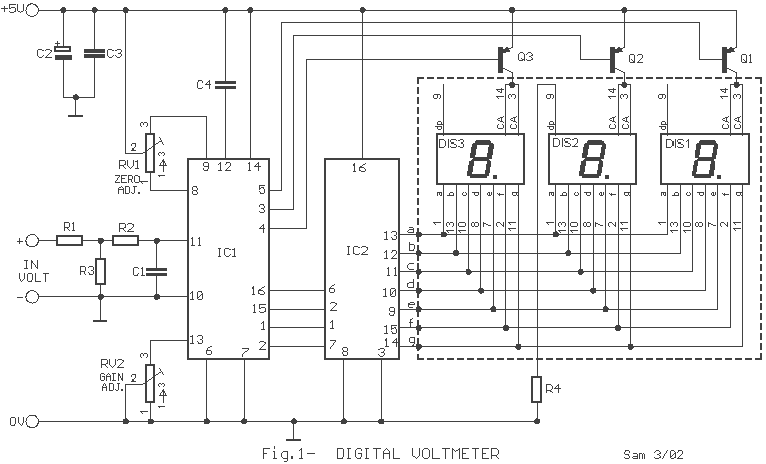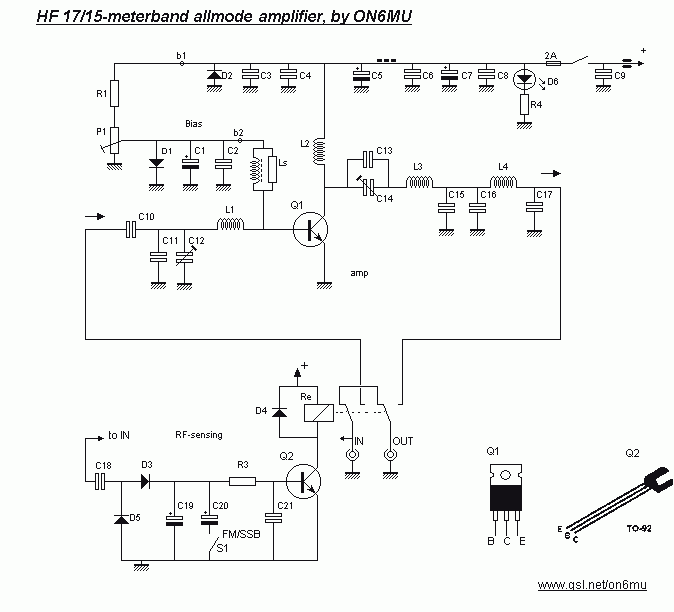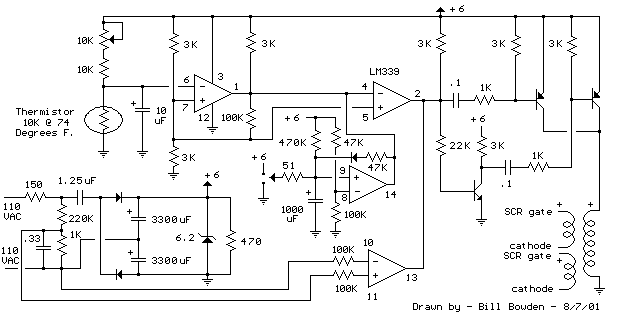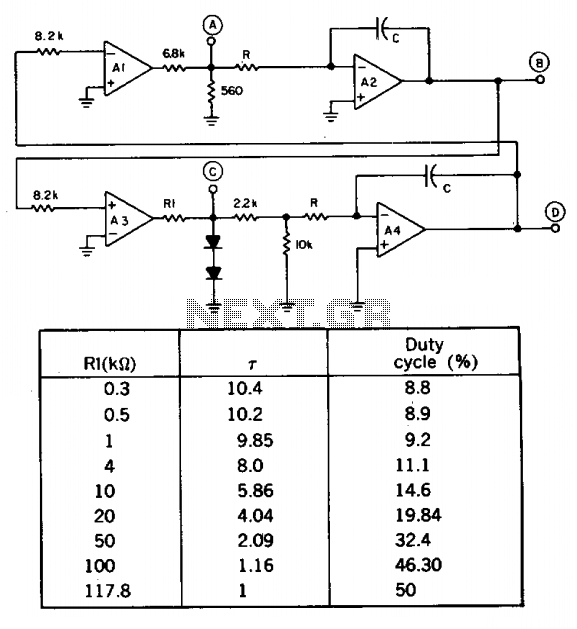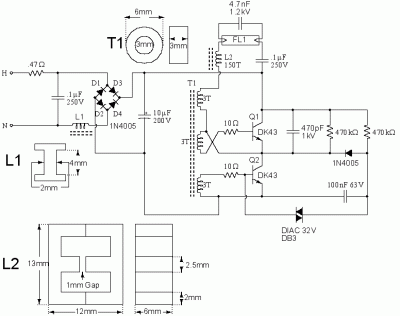
True RMS Watt Meter

This circuit will give you a good, accurate watt meter that can measure various power levels. In the original article, the shunt was a 0.001 Ohm copper shunt giving a 1000 Watt scale. However, because most circuit breakers in homes are 15 Amps, the unit was designed to have a range of zero to 1500 Watts. The shunt on this unit is comprised of five small loops in a single piece of wire in an inverted V shape or an "_n_n_n_n_n_" shape, going from pad to pad. A #16 AWG wire was used, but wire size and lengths should be determined based on the wattage requirements.
The watt meter circuit described is designed to measure electrical power in a specific range, accommodating home circuit parameters. The core component of the design is a shunt resistor, which is crucial for measuring current. The selection of a 0.001 Ohm shunt resistor allows for accurate measurement of current flowing through the circuit, which can be calculated using Ohm's law. This low resistance value minimizes the impact on the circuit being measured while still providing sufficient voltage drop for measurement.
The design features a shunt configured in an inverted V shape, which is beneficial for spatial efficiency and thermal management. The five loops of wire increase the effective surface area, allowing for better heat dissipation during operation, which is particularly important at higher power levels. The choice of #16 AWG wire is suitable for handling the current without excessive heating, but it is essential to verify the wire gauge against the expected load to ensure safety and reliability.
The output of the shunt is typically connected to an analog or digital voltmeter, which interprets the voltage drop across the shunt and converts it into a power reading. This conversion involves multiplying the measured voltage by the current flowing through the circuit, which can be calculated based on the known resistance of the shunt. The design allows for a maximum measurement of 1500 Watts, aligning with the common household circuit breaker ratings.
To enhance the accuracy of the watt meter, it is recommended to calibrate the device against known power sources. This ensures that the readings reflect true power consumption, accounting for any potential discrepancies in component tolerances or environmental factors. Overall, this circuit provides a practical solution for monitoring power usage in residential applications, offering insights into energy consumption and facilitating better energy management.This circuit will give you a good, Accurate Watt Meter that can measure various power levels. In the Origional Article the Shunt was a .001 Ohm Copper Shunt giving a 1000 Watt Scale. However, because Most Circuit Breakers in homes are 15 Amps, I made my unit to have a range of Zero to 1500 Watts. The Shunt on my unit is comprised of 5 small LOOPS in a Single piece of wire in an Inverted V Shape or an " _n_n_n_n_n_ " Shape, going from pad to pad. I used a #16 AWG wire, but you need to determine wire size and lengths based on the wattage r 🔗 External reference
The watt meter circuit described is designed to measure electrical power in a specific range, accommodating home circuit parameters. The core component of the design is a shunt resistor, which is crucial for measuring current. The selection of a 0.001 Ohm shunt resistor allows for accurate measurement of current flowing through the circuit, which can be calculated using Ohm's law. This low resistance value minimizes the impact on the circuit being measured while still providing sufficient voltage drop for measurement.
The design features a shunt configured in an inverted V shape, which is beneficial for spatial efficiency and thermal management. The five loops of wire increase the effective surface area, allowing for better heat dissipation during operation, which is particularly important at higher power levels. The choice of #16 AWG wire is suitable for handling the current without excessive heating, but it is essential to verify the wire gauge against the expected load to ensure safety and reliability.
The output of the shunt is typically connected to an analog or digital voltmeter, which interprets the voltage drop across the shunt and converts it into a power reading. This conversion involves multiplying the measured voltage by the current flowing through the circuit, which can be calculated based on the known resistance of the shunt. The design allows for a maximum measurement of 1500 Watts, aligning with the common household circuit breaker ratings.
To enhance the accuracy of the watt meter, it is recommended to calibrate the device against known power sources. This ensures that the readings reflect true power consumption, accounting for any potential discrepancies in component tolerances or environmental factors. Overall, this circuit provides a practical solution for monitoring power usage in residential applications, offering insights into energy consumption and facilitating better energy management.This circuit will give you a good, Accurate Watt Meter that can measure various power levels. In the Origional Article the Shunt was a .001 Ohm Copper Shunt giving a 1000 Watt Scale. However, because Most Circuit Breakers in homes are 15 Amps, I made my unit to have a range of Zero to 1500 Watts. The Shunt on my unit is comprised of 5 small LOOPS in a Single piece of wire in an Inverted V Shape or an " _n_n_n_n_n_ " Shape, going from pad to pad. I used a #16 AWG wire, but you need to determine wire size and lengths based on the wattage r 🔗 External reference
